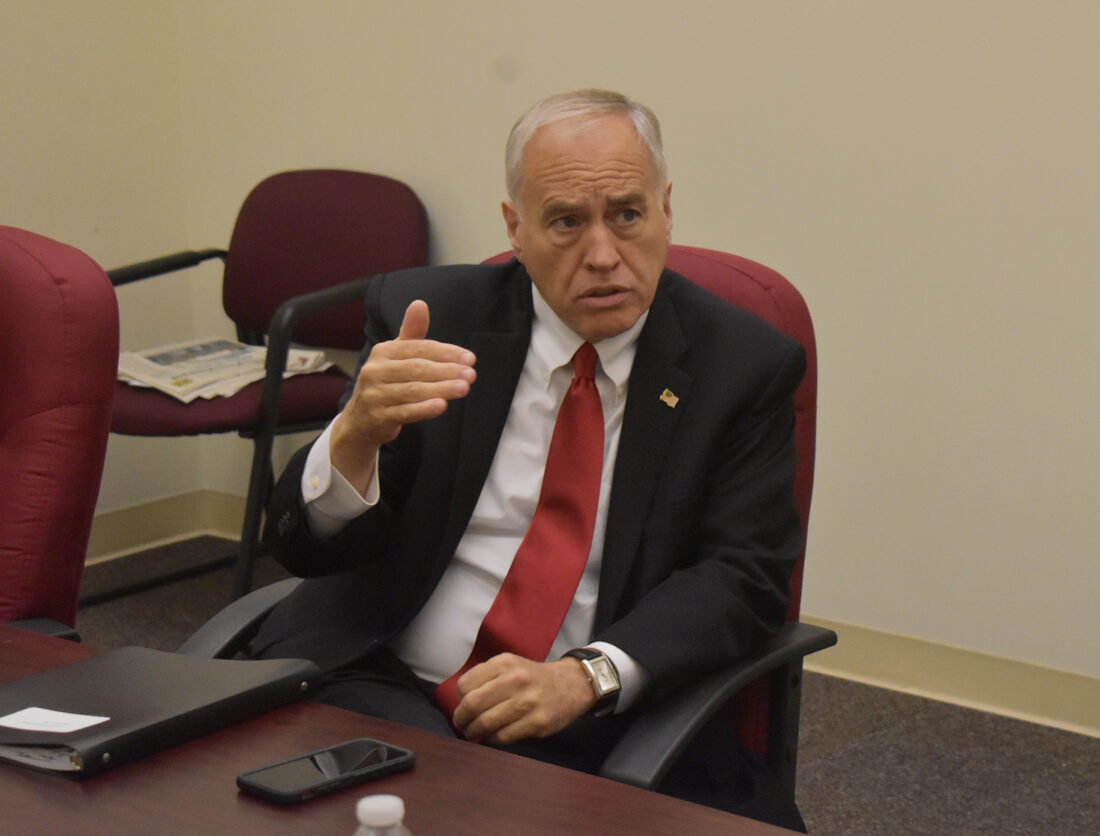DiNapoli Views Toll Increases As Last Option

Thomas DiNapoli
State Comptroller Thomas DiNapoli has identified concerns with the New York State Thruway Authority’s proposal to implement toll increases in the state beginning in 2024.
In December, the Post-Journal reported that the Thruway Authority was proposing a 5% increase in E-ZPass rates that would take effect at the beginning of 2024, as well as an additional 5% increase in 2027. The Thruway Authority’s proposal would also implement a major increase in toll rates for those without E-ZPass. Instead of tolls for people without E-ZPass costing 15% more than E-ZPass rates, the proposal would increase the cost of tolls without E-ZPass to 75% more than E-ZPass rates.
In addition to the Thruway Authority proposal’s toll increases for the highway system, the proposal would annually increase toll rates for the Governor Mario M. Cuomo Bridge, which the state contributed a large portion of funding for between 2012 and 2021. According to DiNapoli’s report, the state contributed $2.3 billion toward the Cuomo Bridge and other Thruway projects.
According to a press release by the comptroller’s office, DiNapoli is urging the Thruway Authority to improve its operations and “maximize non-toll revenues” before raising toll rates on New Yorkers. DiNapoli recently reviewed the toll increase proposal as well as the past 10 years of the Thruway’s finances and discovered “gaps” in information that would be required to fully evaluate the Thruway Authority’s proposal.
“The Thruway Authority’s toll increase proposal comes at a time of extraordinary challenges for New Yorkers who are faced with rising costs for everything from food to shelter to gas,” DiNapoli said. “The Thruway should be more transparent with the public and disclose critical information, and identify and put in place all possible cost-savings and alternative revenue actions to minimize costs to drivers. Raising tolls should be the last option, and the Thruway has more work to do.”
The Thruway Authority’s proposed toll increases are projected to increase toll revenue by $1.9 billion or 28.4% through 2031.
DiNapoli’s reported indicated that both the Thruway’s operations and finances have been influenced by five major factors over the past ten years.
The state comptroller’s report revealed that the implementation of cashless tolling and problems with Tolls by Mail have resulted in “erroneous bills,” fines and penalties. The report found that the “modernization effort” of the Thruway has not yet resulted in increased savings or efficiency.
The sharp decline in Thruway traffic during the COVID-10 pandemic also impacted the Thruway Authority, with a 16.8% decline in revenue during 2020.
The construction of the Cuomo Bridge impacted the Thruway Authority, as $3.8 billion was spent on the project. An additional $254 million is budgeted for the project through 2024.
DiNapoli’s report found that debt management practices have affected the Thruway Authority’s operations. According to the report, the annual debt service on the Thruway’s debt is forecasted to rise to more than $419 million by 2031.
“This growing debt service burden reflects both the impact of the Cuomo Bridge and prior debt management decisions to structure debt to prioritize short-term savings at the expense of long-term finances by deferring debt repayment into future years,” the report said.
Finally, DiNapoli explained that shifting financial obligations have impacted the Thruway Authority. Originally designed to be “self-financing,” DiNapoli said the state’s increasing involvement in the Thruway has “blurred the lines” between the Thruway and the state, which he believes has led to a lack of transparency.
Prior to any toll rate increase, DiNapoli is urging the Thruway Authority to address issues with systemwide cashless tolling and Tolls by Mail, complete a “comprehensive assessment” of operational needs and expenses and remove unnecessary costs, justify cost projects through the disclosure of a capital needs assessment and “maximize non-toll revenues,” which would include federal funding and other sources of revenue such as gas stations, service areas and special permits.



